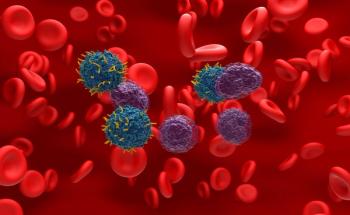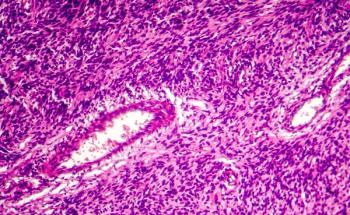
Marstacimab Improved Key Bleeding Outcomes in Hemophilia A or B
Key Takeaways
- Marstacimab significantly reduced annualized bleeding rate by 93% in severe hemophilia A or B patients with inhibitors over 12 months.
- The treatment is approved in the US and Europe, marking the first once-weekly prophylactic option for hemophilia B.
Primary and secondary end points were demonstrated in a phase 3 trial of subcutaneous marstacimab as treatment for patients with hemophilia A or B.
Phase 3 results highlighted the continued positive results of marstacimab (Hympavzi; Pfizer) when treating patients with hemophilia A or B. The phase 3 trial met its primary and secondary end points of improving key bleeding outcomes when compared with on-demand treatment.1
Hemophilia is a rare genetic blood disease that
Marstacimab is a once-weekly subcutaneous treatment that has received regulatory approvals in both the US and in Europe for patients with hemophilia A without factor VIII inhibitors or hemophilia B without factor IX inhibitors.1 The treatment was the first medicine for hemophilia that was approved when administered in a prefilled, auto-injector pen and the first once-weekly prophylactic treatment for people living with hemophilia B specifically.3 The
The BASIS study was a phase 3, open-label, multicenter study that aimed to test the efficacy of marstacimab in patients with severe hemophilia of factor VIII activity of less than 1% or moderately severe to severe hemophilia B of factor IX activity of less than 2%.1 All 48 participants of the study were aged between 12 and 75 years and were living with hemophilia with inhibitors. All participants were treated for 12 months either on marstacimab or an on-demand intravenous regimen with bypassing agents. Participants received prophylaxis during the treatment period. The primary end point was the measurement of the ABR after 12 months with marstacimab compared with on-demand replacement therapy.
The phase 3 trial results showed that treatment with marstacimab led to “a statistically significant and clinically relevant reduction in [ABR] of treated bleeds in people living with severe hemophilia A or hemophilia B with inhibitors.” Marstacimab reduced ABR over 12 months by 93% (1.39 vs 19.78 for on-demand therapy). Spontaneous bleeds, joint bleeds, target joint bleeds, and total bleeds all had superior results when patients used marstacimab.
“These encouraging results demonstrate HYMPAVZI’s potential to help people living with hemophilia A or B with inhibitors, meeting an important need for patients with antibodies that neutralize most factor-based prophylactic options used to manage bleeding episodes,” said Michael Vincent, MD, PhD, the chief inflammation and immunology officer at Pfizer.
These results build on the positive results found when using marstacimab in patients with hemophilia B and also provide positive results in patients with hemophilia A, offering promise in long-term treatments for both conditions.
References
1. Pfizer announces positive topline phase 3 results for HYMPAVZI in hemophilia A or B with inhibitors. News release; Pfizer. June 26, 2025. Accessed June 26, 2025.
2. Hemophilia. Cleveland Clinic. Updated November 14, 2022. Accessed June 25, 2025.
3. Caffrey M. FDA approves marstacimab, first weekly sub-q option for hemophilia B. AJMC®. October 11, 2024. Accessed July 25, 2025.
Newsletter
Stay ahead of policy, cost, and value—subscribe to AJMC for expert insights at the intersection of clinical care and health economics.














































